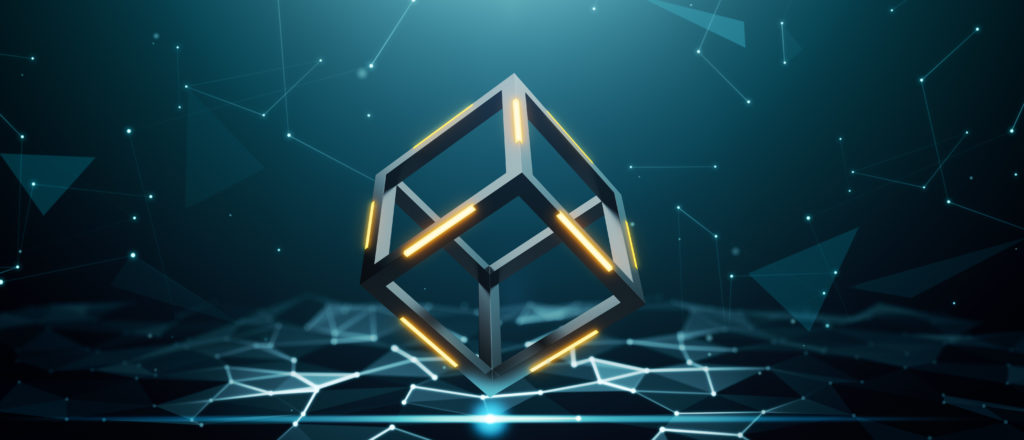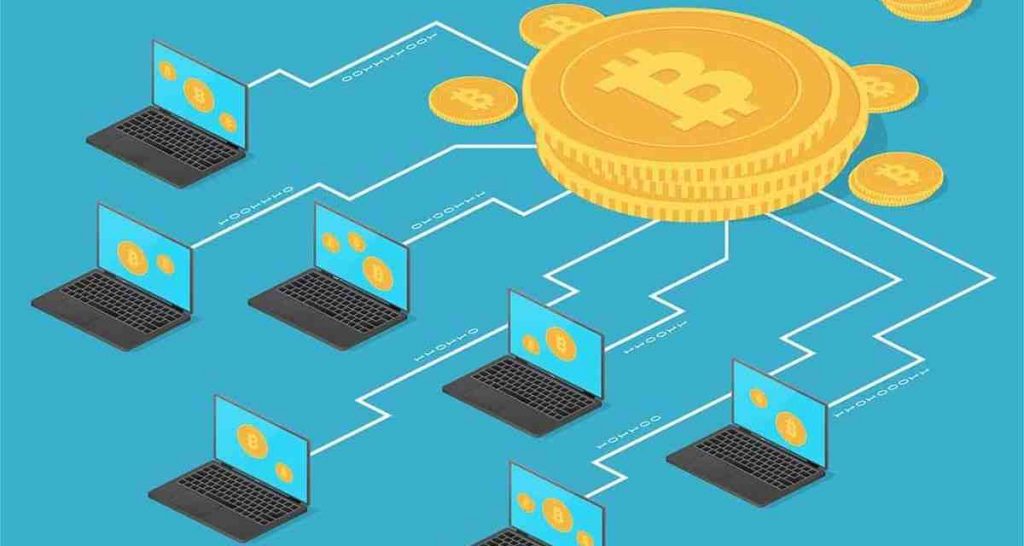An Introduction To Blockchain: Discovering The Technology’s Potential For Implementation


- Blockchain definition
- Pros and cons of blockchain technology
- Best areas of application
- What the future holds for blockchain
If you’ve been following the world of banking, investing, or cryptocurrency lately, then you’ve probably heard of “blockchain.” It is a record-keeping technology that gave birth to Bitcoin. And odds are, you don’t know much about it.
While trying to find out more about the inner workings of the blockchain, perhaps you came across some sort of definition. “Blockchain is a decentralized, distributed, public ledger,” for example, is the statement that I stumbled upon.
But that doesn’t reveal much information, does it? If you wish to plunge deep into the blockchain technology, you need to know more about the subject. That includes how it works, its advantages and disadvantages, as well as its practical applications.
Content Overview
- What Is Blockchain?
- How Does Blockchain Work?
- Blockchain Advantages and Disadvantages
- Cryptocurrency and Blockchain
- Application of Blockchain in Other Domains
- The Future of Blockchain
What Is Blockchain?
For something so sophisticated, the name doesn’t sound so imposing. The word “blockchain” refers to the fact that it’s literally composed of a long chain of digital blocks. These “blocks” store information inside a public database and have three general uses:
- They store any relevant information regarding transactions such as time, date, and amount of currency.
- Blocks collect info about the transaction’s participants. But instead of keeping users’ actual names, they record their digital signatures (a kind of online username).
- They also log information that makes them distinguishable from the rest of the blockchain.
How Does Blockchain Work?
Whenever a block records new data, it becomes a part of the blockchain. However, several processes must take place before this happens:
- A transaction has to occur.
- Then, it has to be verified. You see, blockchain is comprised of computer networks that span the whole globe, and each one of those must validate your transaction. That includes details like time, currency amount, and the digital signatures of the participants in question.
- Once accepted, your transaction will join thousands of other operations in a block.
- The block needs to receive a “hash,” which is a unique code made for identification purposes.
When this brand-new block becomes a part of the blockchain, anyone will be able to access it. If you look at the blockchain, you can see how it is publicly available. That includes transaction data and general info about the block, such as “height,” “time,” and “miner.”
Advantages and Disadvantages of Blockchain
Despite being a bit complicated, blockchain has limitless potential. From its increased security and enhanced user privacy to fewer errors and cheaper transaction rates, this technology can be a part of numerous applications aside from cryptocurrency.
And many individuals are starting to recognize its benefits. According to Statista, blockchain wallets witnessed a massive growth in the past three years, reaching 42 million by the end of September 2019.
Pros
Using blockchain technology will bring forth plenty of benefits, including:
- Lower costs: Normally, consumers need to pay banks for every transaction or notaries to confirm their documents. Blockchain bypasses this third-party verification along with the expenses that come along with it.
- Decentralization: The blockchain does not store records in one location. It continuously spreads and copies them across thousands of computer systems worldwide. After a block is added to the chain, all computers operating in the blockchain network update themselves to reflect all the applied changes.
- Convenient transactions: You can complete transactions in mere minutes and secure them within a few short hours. This feature is beneficial for all cross-border trading because they often take longer to process due to time-zone differences and confirmation of the involved parties.
- Privacy: A majority of blockchain networks have public databases. Therefore, anyone with access to the internet can see transaction history. But that doesn’t mean that they’ll have access to other users’ identifying information.
- Security: Millions of independent systems operating under the blockchain confirm the validity of every transaction. Only after this verification can an operation be added to a block. If this record is tampered with or edited, the block’s hash changes, but the succeeding one does not. So individuals will always fail to alter the details of a transaction.
- Transparency: Although personal information in the blockchain is private, the technology itself is open source. Users operating in the network can modify the blockchain’s code, but only if the majority agrees.
Cons
While blockchain technology has a lot of advantages, one can’t ignore the downsides that come along with it.
- Technological cost: Blockchain saves a lot of money in terms of transaction fees, but the technology to operate it comes at a price. For instance, the system that Bitcoin uses to verify transactions requires a high amount of computing power.
- Transaction speed: There is always a possibility of inefficiency. Take a look at Bitcoin, for example. Its verification system needs an average of ten minutes to add new blocks into the chain. With that rate in mind, the network only has the power to handle 7 TPS (transactions per second) on average.
- Criminal activity: Confidentiality inside the blockchain network gives users an extra measure of protection and privacy. However, it can also be used for illegal activities. An example of that is the Silk Road, a “dark web” market where you can make illicit transactions. It operated for three years before the authorities removed it.
- Network breach weakness: Blockchain networks and cryptocurrencies that are relatively new can be subject to a 51% attack. However, this threat is still hypothetical. A group of miners would need to control the majority (51%) of the network’s hashrate or computing power. As a result, they’ll be able to halt payments and reverse transactions. But experts say that resources for such an attack would cost a lot of money, most likely more than what the miners would gain.
Blockchain in Cryptocurrency
As I mentioned earlier, blockchain is made up of a network of systems spanning the whole world. It doesn’t need a central form of authority to continue to operate, which eliminates a whole slew of transaction and processing fees.
Another good thing is that countries with volatile currencies can now have a stable one by accessing a bigger network of institutions and individuals. That doesn’t just apply domestically, but internationally as well. According to Medium, 15 countries are considering the idea of developing an official cryptocurrency for their population.


Application of Blockchain Outside Cryptocurrency
Blockchain technology is a reliable form of data storage that can be used for different transactions. In fact, you can use it to record and store data about supply chains, property exchanges, or even candidate votes for the election.
Deloitte recently surveyed 1,386 senior executives from companies that already use or may consider blockchain. The results showed that 40% of surveyors would consider investing over $5 million in the technology within the next year. And 53% said that blockchain is now a “critical priority for their organizations in 2019.”
However, only 23% of companies began to implement the technology, down from 34% last year. Furthermore, 43% still think blockchain is overhyped.
Here are some of the most prevalent blockchain uses today.
Banking
There is no other industry than banking that will benefit more from blockchain integration. These financial institutions can only operate within business hours, often five days per week. So if you deposit your check on the last day (Friday) by 6 pm, the odds are that your account won’t receive that money until the following Monday.
Regardless of whether or not you deposit within business hours, it will take days to verify your transaction. That’s because banks have a lot of operations to handle. And that’s where blockchain can come in handy.
By integrating blockchain technology into the banking system, validating transactions will take a few minutes. Moreover, customers can make them at any time because the blockchain operates 42/7. According to Accenture, implementing blockchain can potentially reduce bank infrastructure costs by 30%.
Furthermore, banks will have the option to exchange funds between different institutions more quickly and safely. Stock trading establishments, for example, have a settlement and clearing process. That protocol typically takes days to accomplish, as the shares and money are frozen within that timeframe. But using blockchain can bypass that.
Healthcare
All healthcare providers have the option of leveraging blockchain so they can store medical records more securely. That will assure patients that nothing and no one can tamper with their information. Owners will be able to access their personal files using private keys, which store and encode data into the blockchain.
Blockchain integration in the healthcare sector is starting to take shape. A Statista study says that 55% of all healthcare applications are going to adopt blockchain commercially by 2025.
Hu-manity.co collaborated with IBM to use its blockchain platform to deliver an exciting app called #My31. It acts as a global consent ledger that allows individuals to claim property rights to their personal data.
Property Records
If you’ve ever spent some time in a Recorder’s Office, you’ve probably experienced first-hand the inefficient process of creating property rights records. Even today, government employees must physically deliver the deeds to a recording office.
There, someone manually enters the deed and sends it to the national public index and central database. This process isn’t just time-consuming and costly, it’s also subject to human error. Any inaccuracy will make the tracking of property ownership much harder.
With blockchain, you can eliminate the procedure of scanning documents or looking for physical files in some database. Once property ownership has been successfully verified and stored within the blockchain, the owner can put his mind at ease, knowing that his deed is permanently accurate.
Voting
Using blockchain as a voting medium can potentially boost voter turnout and eliminate doubts of election fraud. The state of West Virginia tested this implementation through a mobile voting pilot back in 2018.
Every vote is stored in blocks and transferred into the blockchain, which makes any manipulation attempt impossible. This technology will improve the transparency of electoral processes, and there would be no need for personnel to count and verify the results.
Supply Chain
Blockchain technology can benefit suppliers by acting as an information record for their purchases. That will enable companies to verify their product’s authenticity, along with ethics and health-related labels.
According to a report from the Food and Agriculture Organization (FAO), the agri-food industry is starting to recognize the many opportunities of blockchain technology.
Smart Contracts
Smart contracts are computer codes that can implement blockchain to enhance the verification and facilitation process of a deal. They follow specific conditions that a user has to agree to. When the party involved meets these conditions, the agreement terms are carried out automatically.
For example, you’re renting an apartment, and the owner wants to use a smart contract. The landlord agrees to hand over the password keys after you pay them with a security deposit. Both sides will send a part of their deal into the contract, and the exchange automatically takes place.
If either one doesn’t fulfill their end of the deal, the tenant gets a refund, and the flat owner takes back his keys. As a result, there’s no need for third-party services that often require a fee.
The Future Of Blockchain Technology – Parting Words
Blockchain opens the doors to many practical applications, and different sectors in our society are starting to see the potential that it holds. As we enter blockchain’s second decade, its implementation in many companies and establishments is no longer uncertain. In fact, one could say it’s very much inevitable.
The technology does come with its share of disadvantages, but the good outweighs the bad. After all, who wouldn’t want faster, cheaper, and safer transactions? And it’s not just the banking and finance sectors that can benefit from the blockchain.
Do you think blockchain technology will only improve from here on out? Or will people continue to doubt it? Tell us what you think in the comment section.



